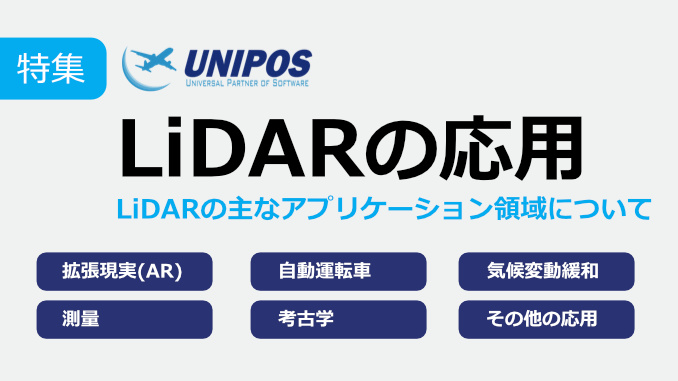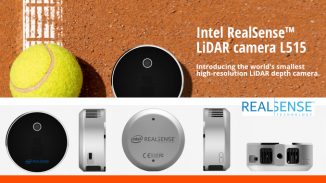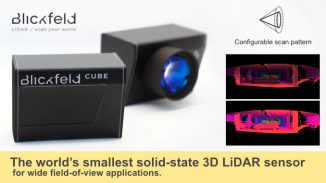
table of contents
LiDAR history
LiDAR (Light Detection and Ranging, Laser Imaging Detection and Ranging), which is attracting attention as a technology for self-driving cars, was being developed by NASA and the US military from around 1960 to measure the distance of the universe. It has been significantly reduced in size and cost since 2015, and now that commercial use is accelerating, it is surprising that it was not commercialized until about 35 years ago. is. Nowadays, remote sensing technology using light is applied in various fields.
| 1930s | Started experiment to measure atmospheric composition using swept searchlight beam |
| 1960 | Theodore Mayman builds and demonstrates the first practical laser |
| 1962 | Measuring the distance from the earth to the moon using a laser beam |
| 1971 | Mapping the Moon using LIDAR (Apollo 15 astronaut) |
| 1985 | Commenced sales of commercial LIDAR (Larsen-500) |
| 1990s | Widely adopted by LIDAR for geographical data mapping |
| 1994 | LIDAR brought into space by Space Shuttle Discovery and used for atmospheric research (NASA/first example) |
| 2005 | Attracted attention by being installed in an autonomous vehicle at the DARPA Grand Challenge (robot car race) |
| 2008 | Bringing a lidar scanner to Mars to investigate the planet's atmosphere (NASA) |
| 2015 | DARPA R&D significantly reduces LIDAR size and cost |
The LiDAR market is expected to continue to grow significantly, with an estimated US$2020 billion in 11 to reach US$2025 billion by 28 with a CAGR of 20.7%.
LiDAR Market (MarketsandMarkets Research Private Ltd.)
https://www.marketsandmarkets.com/Market-Reports/lidar-market-1261.htmlA brief history of LIDAR
https://www.explainthatstuff.com/lidar.html
About LiDAR
LiDAR (Light Imaging Detection and Ranging) is a detection and ranging technology that uses light to detect an object (object) on the surface and detect its size and accurate placement.
LiDAR draws objects using visible, ultraviolet, or near infrared light. You can focus on a variety of materials including non-metallic items, rocks, rain, clouds, chemicals, aerosols and even single molecules.
LiDAR can be used in more than one place and can be used for aerial, ground, or mobile scanning, and narrow laser beams can map physical features with high resolution and accuracy. For example, on an aircraft, you can map high-resolution satellite images (resolution of 30 cm or more).
LiDAR function algorithm
1. Transmission of laser signal
2. Laser signal reaches an obstacle
3. Signals are reflected from obstacles
4. Signal returns to receiver
5. Laser pulse registered
Utilization of LiDAR technology
Use the following wavelengths
– Meteorology / Doppler Lidar Infrared (1500-2000 nm)
– Near infrared (850-940 nm) for ground mapping
– Blue-red for bathymetry (500-750 nm)
– Ultraviolet light for meteorology (250 nm)
In recent years, research is progressing on the application of Doppler lidar that can clearly see wind movements. This approach is very useful for aviation safety, atmospheric data visualization, weather forecasting, and disaster preparedness.
What is LiDAR technology?
https://blog.generationrobots.com/en/what-is-lidar-technology/
About the main application areas of LiDAR
1. LiDAR in Augmented Reality (AR)
Augmented Reality (AR) is a technology that presents virtual content as if it were in the real world, but LiDAR adds clarity to this AR system and helps improve its final output.
The LiDAR scanner enables high quality 3D mapping using point clouds and improves the AR experience with highly accurate point cloud data.
Launched in March 2020, Apple's iPad Pro was the first mobile device to feature a LiDAR scanner. AR apps are expected to increase further than this. The information such as shape and depth obtained from LiDAR is very accurate, and expectations are high for the development of practical AR applications such as games, healthcare, worksites such as factories and buildings, and inspections, inspections, and training in equipment.
Apple's LiDAR Scanner a game-changer in scanning technology?
https://www.geospatialworld.net/blogs/apples-lidar-scanner/
2. Self-driving car LiDAR
An autonomous vehicle that is expected to be put to practical use. LiDAR is known as the "autonomous vehicle's eye" and it calculates distances, identifies obstacles, and creates high-resolution digital images. Information from the LiDAR sensor is used for collision avoidance based on the measurement data of the distance between vehicles, and is also used for determining the timing of deceleration and acceleration (brake operation).
Rider (LiDAR) vs Radar (RADAR) – Advantages and Disadvantages of Autonomous Driving
The advantage of LiDAR is that it can detect small objects with short wavelengths. The feature is that you can build accurate 3D monochrome images of objects.
The disadvantage of LiDAR, on the other hand, is its restricted use at night or in cloudy weather. Operating altitude is only 500-2000m.
The strength of RADAR is that it is not affected by the weather and the working distance is long. It can be operated even in cloudy weather conditions and at night, and its working distance is longer than that of LiDAR.
On the other hand, RADAR has the disadvantage that it cannot detect small objects. Radar has long wavelengths and cannot get an accurate image of the object.
Lidar vs Radar: pros and cons for autonomous driving
https://archer-soft.com/blog/lidar-vs-radar-pros-and-cons-autonomous-driving
3. LiDAR in climate change mitigation
The ultra-high resolution and accurate images provided by LiDAR are very useful for understanding nature. It is also useful for topography, vegetation, deforestation, agricultural patterns, geologists such as carbon cycle, scientists, natural sciences and environmental studies.
Carbon cycle data, for example, has helped us to determine the exact level of carbon stored in forests and the number of trees that should be planted to offset the effects of greenhouse gases. AlsoActive remote sensing systems that can be used to measure the height of a wide range of vegetation are useful not only for vegetation and precision forestry, but also for disaster preparedness (such as forest fire management).Mapping structures including vegetation height, density and other characteristics across the region is a very important tool.
The Basics of LiDAR – Light Detection and Ranging – Remote Sensing
https://www.neonscience.org/lidar-basics
4. LiDAR in surveying
One of the most widely known application areas for LiDAR, LiDAR surveying is used in the fields of construction, urban planning, and local topographic surveys.
Surveying with LiDAR is superior to traditional surveying methods because it collects data very quickly. Spatial models created using LiDAR have negligible error bars, improving final decision making.
■Ground elevation model (DEM) is a value used in surveying and represents a digital elevation model that has z-coordinate values along with x- and y-coordinates. Elevation values are used everywhere, including roads, buildings, and bridges, making it easier to capture the height of the surface.
5. LiDAR in archeology
LiDAR saves archaeologists time and effort and allows them to create models that were previously nearly impossible to create. It plays a particularly important role in excavating old ruins.
In the example below, two archaeologists used LiDAR to create a 2D image of an ancient Mayan city. LiDAR provides unprecedented insight into its ancient city.
Exclusive: Laser Scans Reveal Maya “Megalopolis” Below Guatemalan Jungle
https://www.nationalgeographic.com/news/2018/02/maya-laser-lidar-guatemala-pacunam/
6. Other applications of LiDAR
・MicrotopographyPenetrate to detect surface values)
·Agriculture (Elevation map of farmland)
・Sightseeing and park management
・Environmental assessment (Protect plants and environment)
-Biodiversity of birds
・Simulation of flood model (river flood, etc.)
-Description of basins and rivers,River survey
-ELC (formal and land classification)
-Solar energy plan
・ GIS (Visible range analysis)
-Glacier volume change
・Records of accidents and crime scenes
・Architecture (capture the structure of the building)
・Cellular network planning
・Sewer and manhole surveys, etc.
This time, I introduced the sensing application of LiDAR. It can be said that LiDAR, which is used in a wide range of fields, will keep an eye on it in the future.
Tegara also handles various LiDAR products. Please feel free to contact us.



